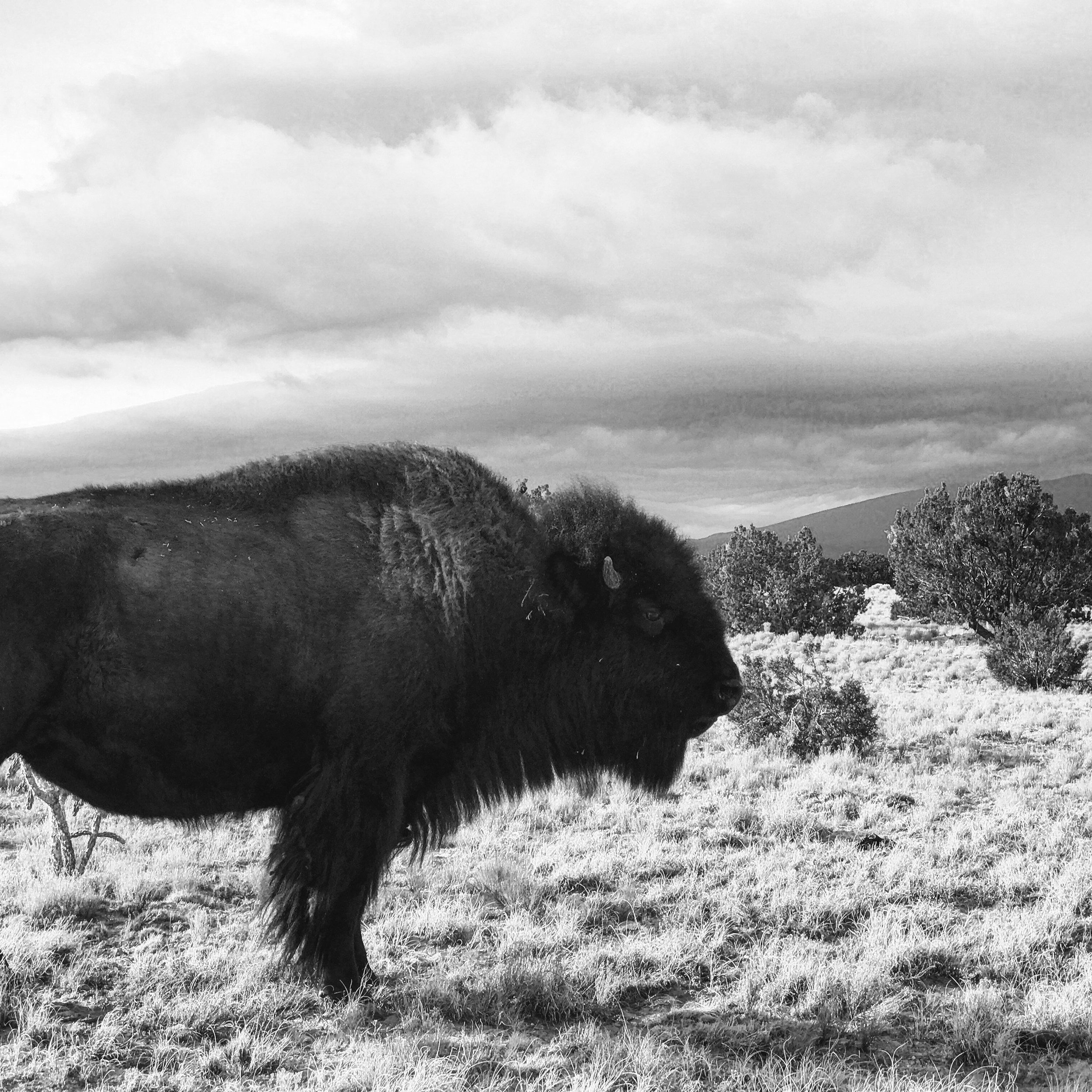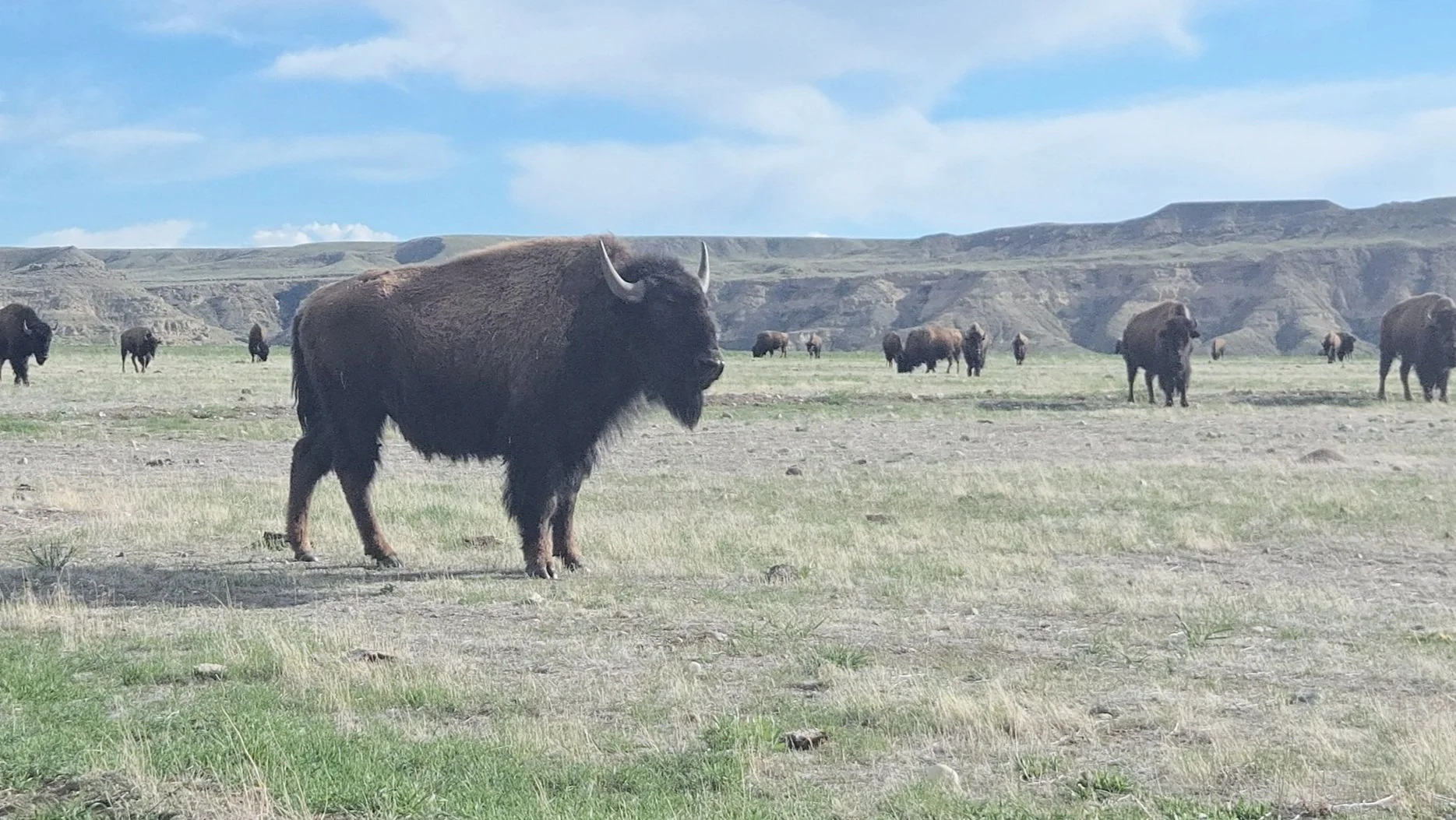
bison belong here
rekindling the land. bringing the bison home.
bringing
the bison home
Not long ago, this land in Eastern Kentucky was slated for a federal prison, a place built to confine and disappear. But the land had other plans. And so did we.
This is the ancestral homeland of multiple Indigenous Tribes, who lived in these hills long before colonization. They hunted here, held ceremonies here, and lived in deep relationship with this land. We know all things are related: the people, the land, the flora and fauna.
Now, we are preparing the land for the return of bison, a relative that the area has missed.
Native to this region, bison shaped the landscape and sustained the people who lived with them. They are a keystone species. Their return is more than restoration. It is a living act of healing, memory, and renewal. With their help, we can restore the soil, protect the other pieces of the ecosystem on the site, and restore a harm that was done to Indigenous communities when the bison were removed.
What was nearly a site of captivity will now be a place of kinship and care.
be part of the return
we have the chance to bring bison back to this land
but first we must to prepare the ground
This isn’t just about restoring animals to a landscape. It’s about restoring relationship. For Indigenous people, whose ancestors lived, hunted, and held ceremony here, the return of the bison carries deep cultural and spiritual meaning. This will be a place where they can come see the land, see the herd, and reconnect with cultural practices related to their care.
And it will be a place of welcome for others, too. A space to learn, witness, and be in relationship with land, history, and care.
We’re raising $60,000 to build the fence that will make this possible. Before the bison can come home, their pasture must be ready, safe, secure, and built with care. This fence isn’t just a structure. It’s the foundation for everything that comes next.
Your donation supports the work of bringing the bison home: building the fence, preparing the land, and supporting the people who will care for the herd.
Prefer to give by mail?
Appalachian Community Fund
1405 E Magnolia Ave
Knoxville, TN 37917
Checks can be made payable to our fiscal sponsor, Appalachian Community Fund, with a note that it’s for The Appalachian Rekindling Project fence fund.
a land reclaimed
In 2023, we purchased 63 acres of land in Letcher County, Kentucky. This land was once selected by the federal government as the site for a maximum-security prison.
It would have been the fourth federal prison in the region, built on a former strip mine in a community already impacted by environmental damage and economic abandonment. We organized alongside local residents, fellow Indigenous leaders, formerly incarcerated people, and environmental advocates to stop the project. We challenged the idea that more cages meant progress.
Thanks to the support of grassroots donors and aligned funders, we were able to purchase the land before the state could move forward.
Now, instead of a prison, this land will become a home.
Instead of razor wire, there will be grass and open sky.
Instead of confinement, there will be care.
bison belong here
The return of bison is a return to lifeways rooted in respect and relationship. Across generations, the presence of bison offered not only sustenance, but teachings about migration, generosity, and the power of living in balance.
In the context of Appalachian land restoration, restoring bison to these mountains is a way of rekindling a cultural memory that reaches back through time. Their presence invites us to remember that healing is not just ecological. It is cultural, spiritual, and collective. Their hooves are ridged to till soil. Their fur carries seeds and is used by birds to incubate their babies in a nest at just the right conditions. Their wallowing creates ecosystems for lizards and certain plants. They are a keystone species, and we need them.
For centuries, bison moved through these hills, shaping the land and sustaining the people who lived in kinship with them. Their return marks a turning point where extraction gives way to care and where a place once marked for erasure becomes a sanctuary for renewal.
This will also be a place for people to return to. Indigenous communities will have the opportunity to be close to the bison again, to walk the land, and to reconnect with a relationship that was once disrupted. People from all walks of life will be welcome to witness, to learn, and to enter into relationship with the land through presence, care, and respect.
Before the bison arrive, we must prepare the ground. Their home must be safe, secure, and ready to receive them. That begins with building a fence. A fence that protects the herd and creates the conditions for this return to thrive.
This is the first step in a much larger story: restoring kinship between animal, land, and people in a place once marked by dispossession.
learn more about the project
Curious about the land, the bison, or what comes next? This section offers deeper context about the work we’re doing, the history behind it, and how you can connect. Explore some of the most common questions we hear and the values that guide our answers.
-
Yes. While most people associate bison with the plains, they also lived in parts of Eastern Kentucky. They moved through foothills, river valleys, and open canebrakes, especially near salt licks and mineral springs maintained by Indigenous fire practices. Though the steepest mountain areas weren’t ideal for large herds, bison grazed and passed through the region regularly.
Their movements shaped the landscape and left lasting traces. Buffalo paths became early roads, and their presence is reflected in local place names. The Indigenous peoples of this land, the Shawnee, Cherokee, and Yuchi, hunted bison here. Restoring bison to this land renews a relationship with deep cultural and ecological roots. -
They are often called buffalo, though they are in fact bison. Bison are a distinct species native to North America. The name “buffalo” is technically a misnomer, originally given by early European colonizers. They had previously encountered African Cape buffalo and Asian water buffalo during expeditions and colonial ventures in Africa, India, and East Asia. When they arrived in the Americas and saw the massive, horned animals, they called them “buffalo” out of resemblance to those familiar species.
Scientifically, true buffalo belong to the genus Syncerus (Cape buffalo) or Bubalus (water buffalo), while American bison are in the genus Bison. They are only distantly related. Still, the word “buffalo” took hold in the English language, deeply rooted in North American history, place names, and cultural memory.Today, we use “buffalo” and “bison” interchangeably.
-
The land is located in Letcher County, in Eastern Kentucky. It spans 63 acres and sits on a former strip mine site. In 2024, the Appalachian Rekindling Project purchased the property to stop a proposed federal prison from being built there.
The land is now permanently held for community stewardship and ecological restoration. Thanks to the support of grassroots donors and aligned funders, the site has been secured for a different future, one rooted in care, not confinement.
-
We are committed to hiring local people, especially those with ties to this land, to build the fence and work with the bison. This work will have priority to be done by hands that know these hills.
When the bison arrive, they will not be left alone. Caretakers from the region will tend to the herd, working with veterinarians, ensuring their health, safety, and dignity. Our goal is to create a long-term model of stewardship where people, land, and animals thrive together in relationship. -
The fence is just the beginning. Once it is complete, we will welcome the bison to their new home and begin long-term stewardship.
-
Yes. We plan to offer opportunities for people to visit in ways that are grounded in care and relationship.





